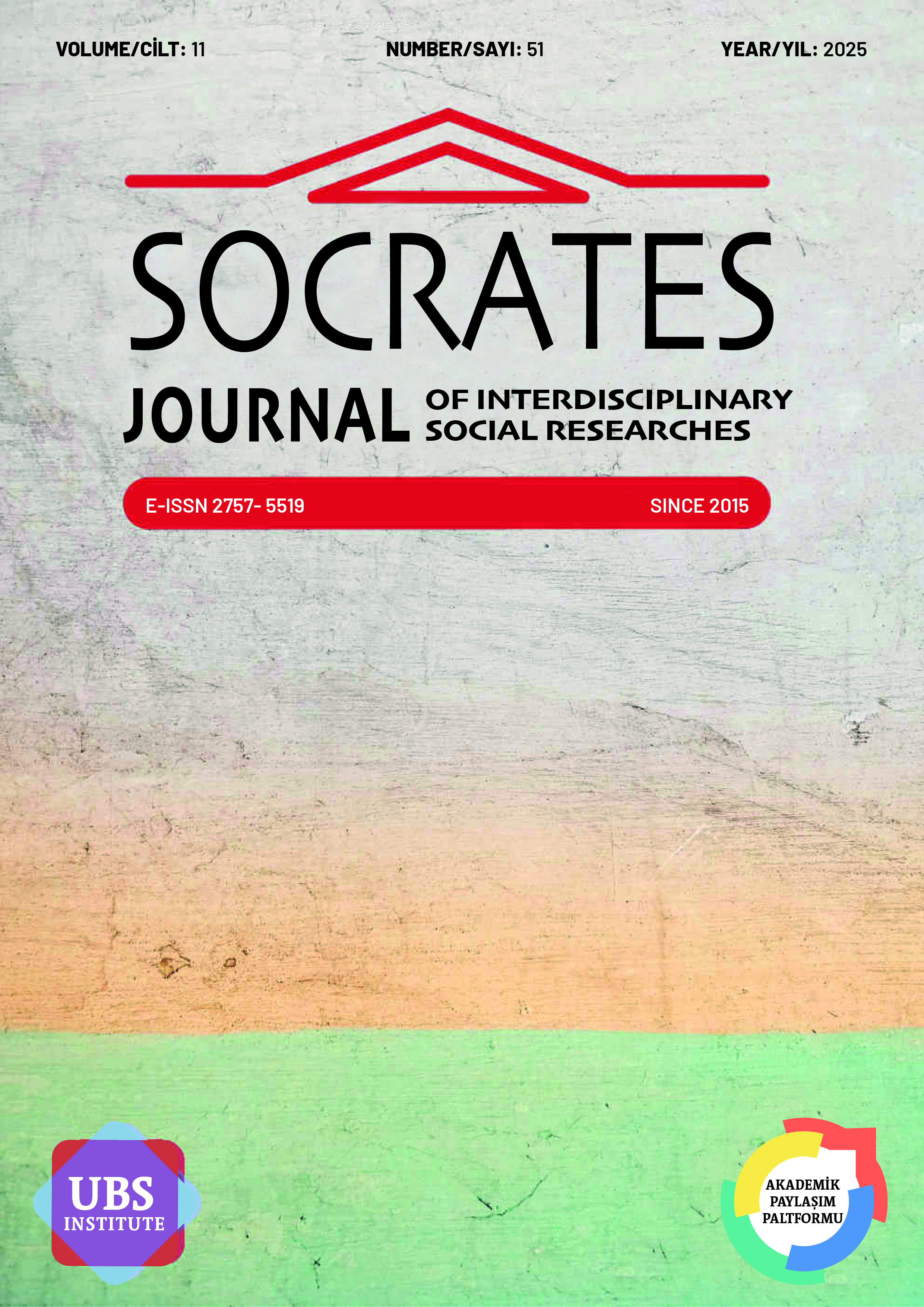INTERPRETATION OF CLASSICAL WESTERN MUSIC PIECES WITH ŞELPE TECHNIQUE IN BAĞLAMA: THE EXAMPLE OF TURKISH MARCH (RONDO ALLA TURCA)
BAĞLAMA’DA ŞELPE TEKNİĞİ İLE KLASİK BATI MÜZİĞİ ESERLERİ YORUMLAMA: TÜRK MARŞI (RONDO ALLA TURCA) ÖRNEĞİ
DOI:
https://doi.org/10.5281/zenodo.15056265Keywords:
Bağlama, Şelpe Technique, Turkish March, Adaptation, TranscriptionAbstract
In music world, it is known that solo performances of classical western music works are performed with western music instruments such as piano, violin and flute, which are suitable for the Tampere system. In this study, the tonal characteristics of the bağlama instrument, which is identified with the Turkish folk music tradition, and its potential to offer a new form of interpretation in the classical western music repertoire were aimed by taking into account its tonal characteristics, technical capacity and traditional ways of use. In this study, the 3rd movement “Rondo alla turca” (Turkish style rondo), known as the Turkish March, of the Piano Sonata No. 11 in A major (K. 311) composed by Wolfgang Amadeus Mozart, who was inspired by the rhythms of the Ottoman Mehter march, was used as a sample. The adaptation of classical western music works to traditional instruments such as bağlama is important in terms of supporting intercultural interaction and enabling new forms of expression in musical language. In the research, the survey model of the descriptive method was utilized. The data obtained with these methods were analyzed and adapted to the bağlama in the form of TAB (Tablatur) note reading with the şelpe (tapping) technique. As a result of this research, a section from a piece composed in sonata form was added to the bağlama repertoire. In addition, it is thought that the method applied in this process will guide the adaptation studies to be made from classical western music works to traditional instruments such as bağlama.
References
Cemaloğlu, N. (2009). Bilimsel araştırma yöntemleri. Abdurrahman Tanrıöğen (Ed.), Veri toplama teknikleri. Anı Yayıncılık.
Çepni, S. (2018). Araştırma ve proje çalışmalarına giriş (8. baskı). Celepler Matbaacılık.
Ersoy, İ. (2007) Uluslararası “Halk Müziğinde Çalgılar” Sempozyumu bildirisi, 14-15-16 Aralık 2007, Kocaeli
Karaçay, B. (2020). Bağlama (Saz) ve Yapısı Hakkında Temel Bilgiler. https://bakikaracay.com/baglama-saz-yapisi-parcalari-temel-bilgiler/#yapisi, 12.01.2025.
Karahan, C. (2010). Bağlama Öğretiminde Yeni Bir Yöntem. Okutman Yayıncılık.
Karakaya, İ. (2009). Bilimsel Araştırma Yöntemleri Abdurrahman Tanrıöğen (Ed.), Bilimsel Araştırma Yöntemleri (s. 59-62). Anı Yayıncılık.
Karasar, N. (2005). Bilimsel Araştırma Yöntemi. Nobel Yayın Dağıtım.
Kurys, J. A. (2016). The art of transcription and its impact on the development of the viola as a solo instrument[Unpublished DMA dissertation]. University of Nebraska.
Okan, C. (2009). F. Liszt’in piyanoya uyarlama sanatı ve buna bir örnek olarak L. van Beethoven’in 5. senfonisi’nin analizi [Yayımlanmamış yüksek lisans tezi]. İstanbul Mimar Sinan Güzel Sanatlar Üniversitesi.
Parlak, E. (2000). Türkiye’de el ile (şelpe) bağlama çalma geleneği ve çalış teknikleri. Kültür Bakanlığı Yayınları.
Say, A. (1997). Müzik Tarihi (3. basım). Müzik Ansiklopedisi Yayınları.
Say, A. (2005). Transkripsiyon. İçinde Müzik Sözlüğü. Müzik Ansiklopedisi Yayınları.
Sözen, İ. (2022). Seid Rüstemov tar konçertosu birinci bölümünün bağlamaya uyarlanması. Türk & İslam Dünyası Sosyal Araştırmalar Dergisi, 9(33), 39-53.
Uluocak, S. (2014). Klasik gitar tarihi III: Klasik ve romantik dönemde gitar. Doruk Yayımcılık.
Vapur, H. ve Şen, Y. (2021). Tablatur türleri ve günümüzde kullanılan modern gitar tablatur örnekleri. The Journal Of Internatıonal Socıal Research, 14(79), 259-282.
White Galvin, R. (2013). Viola Transcriptions: History, rationale, and process, with focus on selected works by August Halm. [Unpublished DMA dissertation]. University of California Santa Barbara.
https://www.britannica.com/art/arrangement, 20.01.2025.
https://bakikaracay.com/baglama-turleri-cesitleri-ozellikleri/, 02.01.2025.
Downloads
Published
How to Cite
Issue
Section
License
Copyright (c) 2025 Socrates Journal of Interdisciplinary Social Studies

This work is licensed under a Creative Commons Attribution 4.0 International License.


